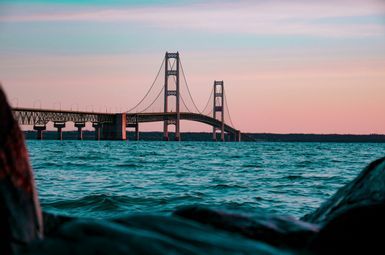
Researchers at U-M’s Rogel Cancer Center want to build a movement to understand how exposures to toxic metals, industrial pollution and “forever chemicals” called PFAS, are impacting the health and cancer risk of residents across Michigan.

About 71 percent of the Earth’s surface is covered by water, with freshwater accounting for just 2.5 percent of that total. Just 1 percent of our freshwater is accessible, with most of it trapped in glaciers and snowfields. In essence, only 0.007 percent of the planet's water is available to fuel and feed its 7.8 billion people. And there are a number of ongoing threats to our water quality, including harmful algal blooms, microplastics, hypoxia, PFAS and lead, which impact everything from our drinking water to tourism dollars. The University of Michigan is collaborating with communities and researchers worldwide to address these critical threats, paving the way to prevent future environmental crises.

Researchers at U-M’s Rogel Cancer Center want to build a movement to understand how exposures to toxic metals, industrial pollution and “forever chemicals” called PFAS, are impacting the health and cancer risk of residents across Michigan.
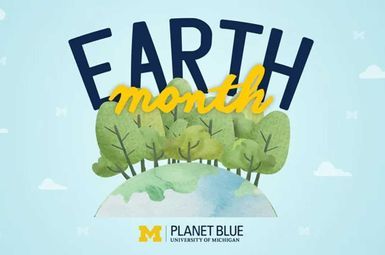
U-M is marking late March and all of April with a series of events focused on sustainability and climate action, continuing a tradition that began with the first “Teach-In on the Environment” in 1970—which grew into what is now known as Earth Day.
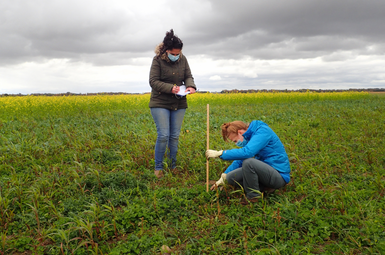
Rackham Ph.D. candidate Etienne Herrick-Sutton works with Great Lakes region farmers to identify strategies for improving the environmental and economic outcomes of cover cropping.
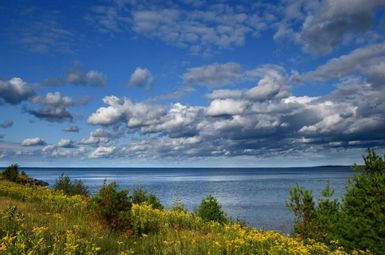
Six new research projects will investigate the shifting dynamics of harmful algal blooms, economic trends in coastal communities, emerging fish viruses, and other issues relevant to the Great Lakes.
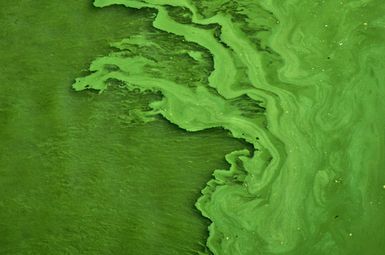
The threat of harmful algal blooms (HABs) continues to plague Lake Erie, prompting intensified efforts from binational jurisdictions to address this persistent environmental challenge. Central to this endeavor is the mitigation of phosphorus, recognized as a key driver of algal blooms, through coordinated action plans.
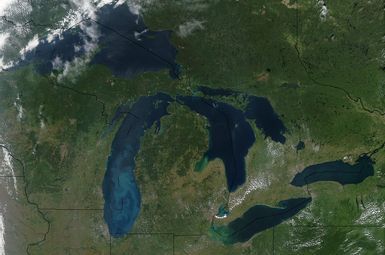
U-M is a partner in the Great Lakes Water Innovation Engine, one of ten regional hubs the National Science Foundation announced this week as part of a program that’s among the largest broad investments in place-based research and development in the nation’s history, according to NSF.
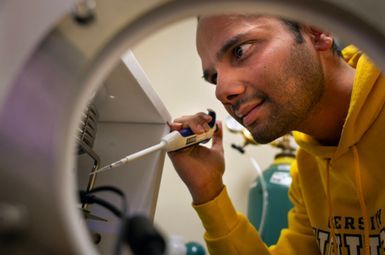
New, nontoxic materials could one day keep solar panels and airplane wings ice-free, or protect first responders from frostbite and more, thanks to a new U-M-led project funded by the Defense Advanced Research Projects Agency. Existing materials used to accomplish these feats come with serious downsides. For instance, road salts prevent pavements and streets from freezing but also corrode concrete and enter natural freshwaters through runoff, to the detriment of aquatic life.
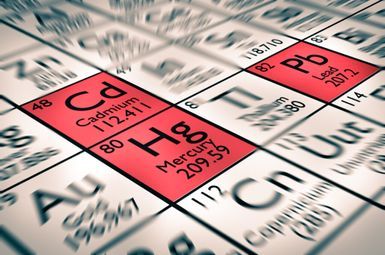
Middle-aged women with elevated levels of heavy metals are more likely to have depleted ovarian function and egg reserves, which may lead to earlier arrival of menopause and its negative health effects, a new U-M study shows.
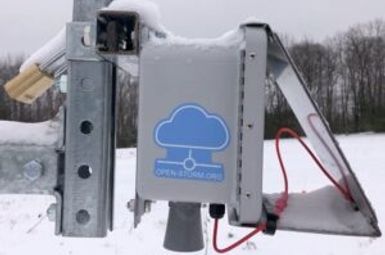
This winter, researchers at the U-M Biological Station in northern Michigan are strengthening their snow science with new technology to track the snowpack at an hourly rate and get a deeper understanding of the complexities of global environmental change.

The need for a compact came when, twenty-five years ago, a Canadian company decided they could fill tanker ships with Great Lakes water to sell to countries with water shortages. Wanting to protect the lakes, the Great Lakes states, along with Ontario and Quebec, began the complex negotiations that would lead to the formal agreement detailing how they’d work together to manage as well as protect the Great Lakes.
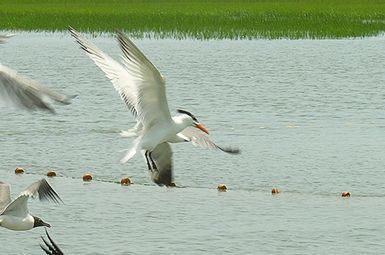
This summer’s Chesapeake Bay “dead zone” was the smallest it’s been since monitoring began in 1985, according to data released by the Chesapeake Bay Program’s monitoring partners: the Maryland Department of Natural Resources, Old Dominion University and Virginia Institute of Marine Science. The model used to make the annual forecasts was developed at U-M.
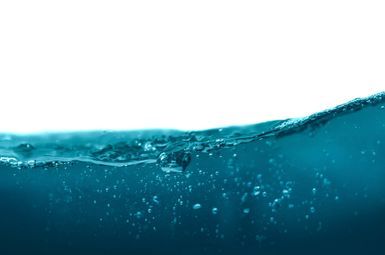
While Legionella bacteria can be found in natural freshwater environments, outbreaks of Legionnaires’ disease are more often associated with large water systems in public buildings, cooling towers, and other places where water is stagnant or flows at a low rate.

Flint residents have learned to question everything in the decade since the city’s drinking water first began showing signs of lead contamination. Even now, after seven straight years with water meeting federal safety guidelines, the lack of trust remains for many. U-M researchers and their partners are addressing this lingering problem on multiple fronts — from continued testing to in-school education and consulting with the city.

Over the course of the semester, U-M students are investigating drinking water-related issues in Michigan — including contamination, accessibility and affordability — to propose novel solutions.

LSA’s Detroit River Story Lab teaches students from elementary school through college about the past and future of the vibrant body of water.

Ann Arbor and other cities across the Midwest and Northeast have been referred to by climate specialists as “climate havens,” natural areas of refuge that are relatively safe from extreme weather events such as intense heat and tropical storms.
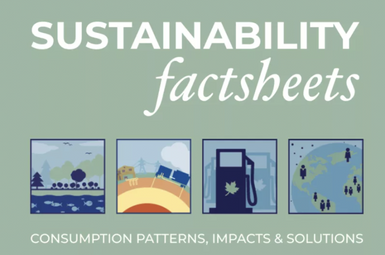
Each peer-reviewed factsheet presents data on patterns of use, life cycle impacts, and sustainable solutions. Updated annually by a current SEAS graduate student, the collection is a free resource to inform journalists, policymakers, business professionals, students, teachers and the public.

Nearly $1.23 billion has been spent by the U.S. government since 2004 on the cleanup of toxic pollutants in waterways resulting from manufacturing activities in historic areas around the Great Lakes.

“Water management will be one of the challenges of our generation,” Gilchrist told students. “In order to understand how we can meet that challenge, we need smart, we need bold, we need connected information professionals to be part of the process.”

PFAS have contaminated water, food, and people through products such as Teflon pans, waterproof clothing, stain-resistant carpets and fabrics, and food packaging. They are often referred to as “forever chemicals” because they are resistant to breaking down and therefore last for decades in the environment.
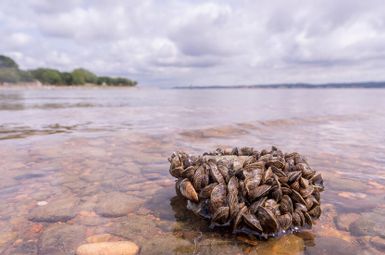
“Water conservation and access” brings a slew of images to mind: wastewater flowing through main lines to a city treatment plant, a fisherman yanking invasive mussels off the hull of a trawler, the installation of filters in communities that lack access to safely managed drinking water.
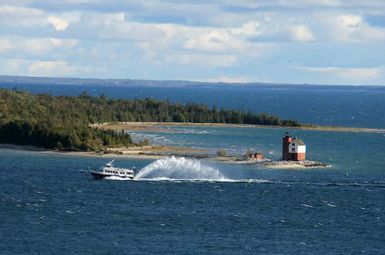
Should states and Indigenous nations be able to influence energy projects they view as harmful or contrary to their laws and values? This question lies at the center of a heated debate over Enbridge Energy’s Line 5 pipeline, which carries oil and natural gas across Wisconsin and Michigan.
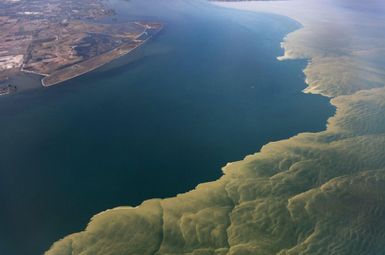
Lake Erie harmful algal blooms consisting of cyanobacteria, or blue-green algae, are capable of producing microcystin, a known liver toxin that poses a risk to human and wildlife health. Such blooms may force cities and local governments to treat drinking water and to close beaches, and they can harm vital local economies by preventing people from fishing, swimming, boating and visiting the shoreline.
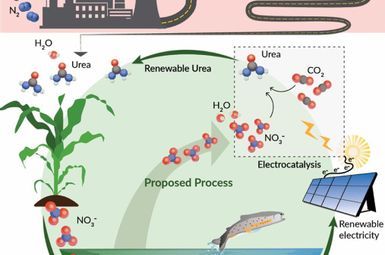
The production of the fertilizer urea is one of the largest carbon dioxide emitters in the chemical industry, but it doesn’t have to be that way. With $1.3 million in funding from the W. M. Keck Foundation, a new, more sustainable approach for producing urea will be tested at U-M.
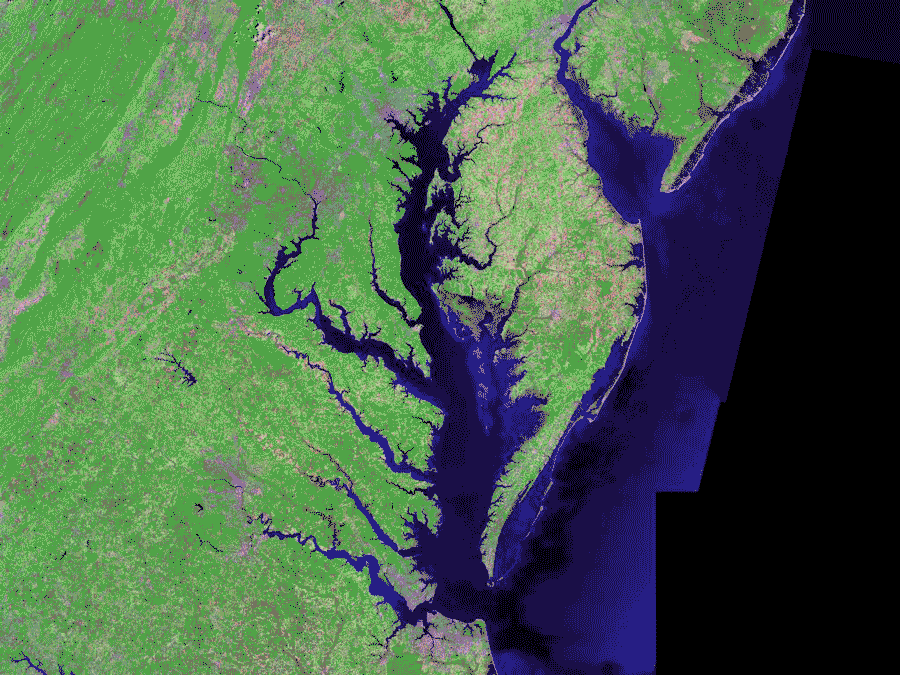
In 2023, the dead zone is predicted to be 33% smaller than the long-term average taken between 1985 and 2022. If the forecast proves accurate, this summer’s Chesapeake Bay dead zone would be the smallest on record.
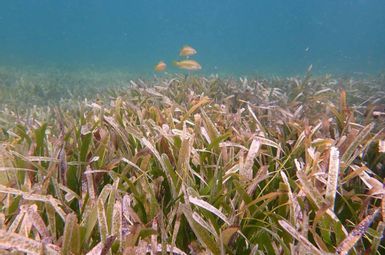
Discussions of valuable but threatened ocean ecosystems often focus on coral reefs or coastal mangrove forests. Seagrass meadows get a lot less attention, even though they provide wide-ranging services to society and store lots of climate-warming carbon.
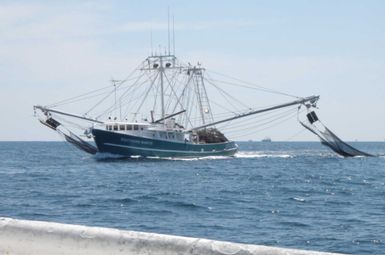
A team of scientists including a U-M aquatic ecologist is forecasting a summer “dead zone” in the Gulf of Mexico that will cover an estimated 4,155 square miles, which is below the 5,364-square-mile average over the 36-year history of dead zone measurements in the region.

Scientific studies have shown that exposure to some PFAS in the environment may be linked to harmful health effects in humans and animals. Because there are thousands of PFAS chemicals found in many different consumer, commercial, and industrial products, it is challenging to study and assess the human health and environmental risks.

Now more than 100 years old, the Biological Station is a 10,000-acre property in the northern Lower Peninsula of Michigan whose core mission is to advance environmental field research, engage students in scientific discovery, and provide information needed to understand and sustain ecosystems from local to global scales.
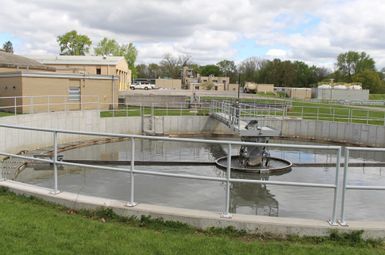
“By having access to this information, people can make informed decisions about their behavior if they have a personal concern about the levels of pathogens detected in their community.”
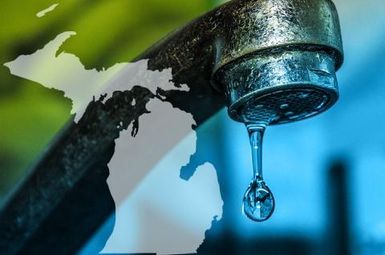
State agencies and the U-M Water Center will work to understand and reduce Michigan’s nutrient runoff to Lake Erie, as well as design and implement a diverse, robust and transparent advisory process to inform the state’s adaptive management plan for the lake.

“I wish to use this fellowship to answer these questions in the context of Mexico, documenting through “day in the life”-style illustrations of various people and communities interacting with water. I hope my findings can be transferable to other countries and regions facing similar challenges.”
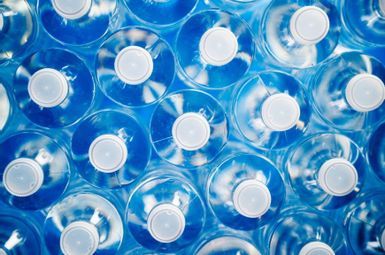
The U-M Museum of Art’s recent interactive discussion, “Talking Trash,” shared insights and advice on combating the overwhelming effects of single-use plastic. The event was inspired by The Plastic Bag Store, an immersive public art installation created by Robin Frohardt that provides social commentary on our plastic consumption.
New information about an emerging technique that could track microplastics from space has been uncovered by U-M researchers. It turns out that satellites are best at spotting soapy or oily residue, and microplastics appear to tag along with that residue.
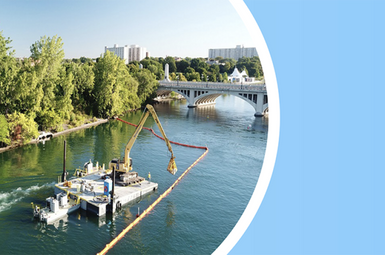
The report calls for “urgency” in cleaning up toxic sediment on the bottom of the Detroit River. Remediation is needed on the Detroit side, but not on the Canadian side, according to the report.

A U-M startup that helped accelerate the removal of dangerous lead pipes in Flint and many other communities has joined a White House partnership aimed at replacing all of the nation’s lead service lines in a decade. The public-private initiative aims to expedite the removal of lead in drinking water — a problem that rose to national prominence when lead was discovered in Flint’s drinking water several years ago and spurred a public health crisis.
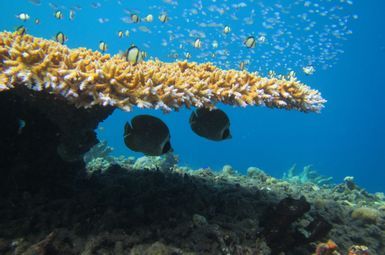
Mass coral bleaching events are making it harder for some species of reef fish to identify competitors, new research reveals. Scientists studying reefs across five Indo-Pacific regions found that the ability of butterfly fish individuals to identify competitor species and respond appropriately was compromised after widespread loss of coral caused by bleaching.
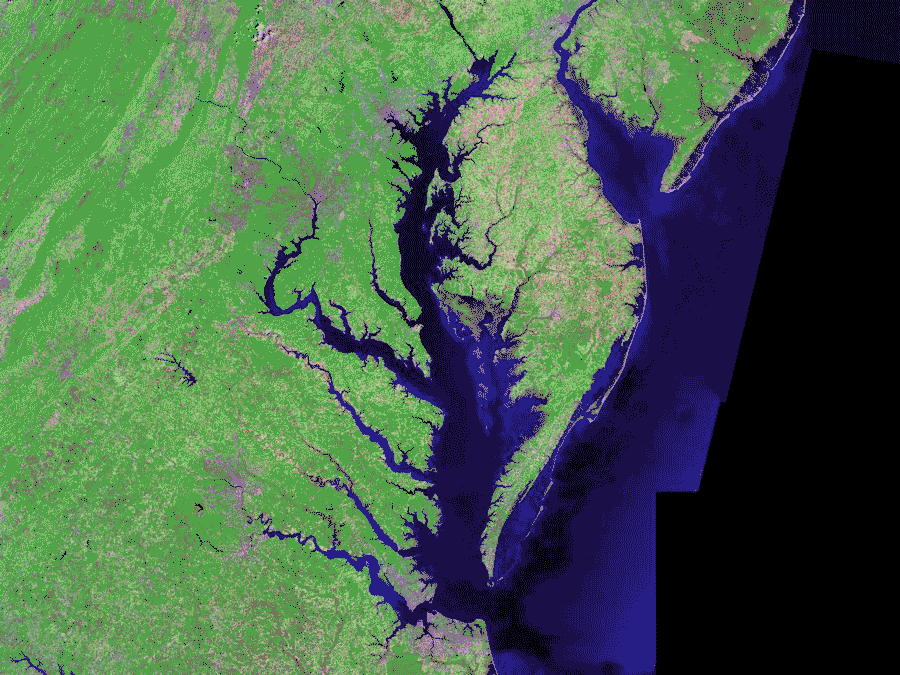
This year’s Chesapeake Bay “dead zone” was the 10th-smallest observed since 1985, according to findings released today by the Chesapeake Bay Program and its partners, including U-M. The annual Chesapeake Bay dead zone is an area of low oxygen that forms in deep waters when excess nutrients, including both nitrogen and phosphorus, enter the water through polluted runoff and feed naturally occurring algae.
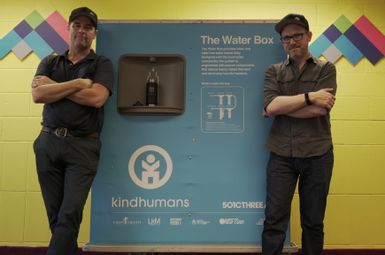
When an emergency causes a disruption in access to clean water, it seems reasonable to respond by providing the public with bottled water. In the short term, this can provide a safe supply of water while the problems get sorted out. But what if the emergency has lasted eight years, and counting, as it has in Flint, Michigan?

Fish excretions. Yes, that’s fish pee. Could it improve food security in the Caribbean? Allgeier thinks so, and it might even help slow global warming.

We usually think of climate change in terms of summer heat waves, warming oceans and extreme weather events. But what is happening in winter, when the ground should be frozen or covered in snow? Statistics show that winter is actually the season that is warming fastest in the U.S., and this is having some serious and unforeseen consequences.
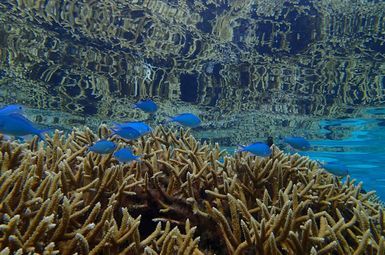
How can we boost the resilience of the world’s coral reefs, which are imperiled by multiple stresses including mass bleaching events linked to climate warming? One strategy advocated by some researchers, resource managers and conservationists is to restore populations of algae-eating reef fish, such as parrotfish. But a new study that analyzed long-term data from 57 coral reefs around the French Polynesian island of Mo’orea challenges this canon of coral reef ecology.
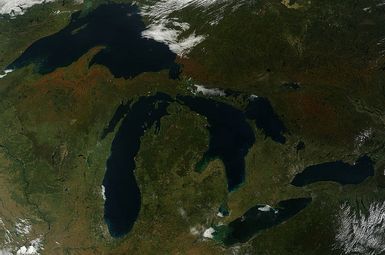
U-M will work with Michigan State University, Wayne State University, and regional and state stakeholders to craft policies that will ensure safe drinking water at low cost. Labeled the Michigan Center for Freshwater Innovation (MFIC), the partnership will work with the state’s Department of Environment, Great Lakes and Energy (EGLE) to fulfill the promise of directives issued late last year by Gov. Gretchen Whitmer on safe drinking water.
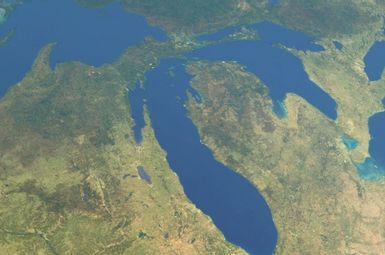
From the Great Lakes to its inland rivers and streams, hiking trails to golf courses, and lakeside cottages to campgrounds, the State of Michigan has long offered a near-endless number of natural resources to enjoy each summer—and a thriving tourism industry to prove it. But like with the rest of the country, and planet, the effects of climate change not only loom in the distance, but are here and causing real challenges to our ecosystem, and the outdoor recreation it provides, right now.
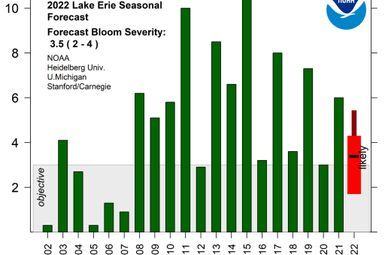
U-M researchers and their partners are forecasting that western Lake Erie will experience a smaller than average harmful algal bloom this summer, which would make it less severe than 2021 and more akin to what was seen in the lake in 2020.